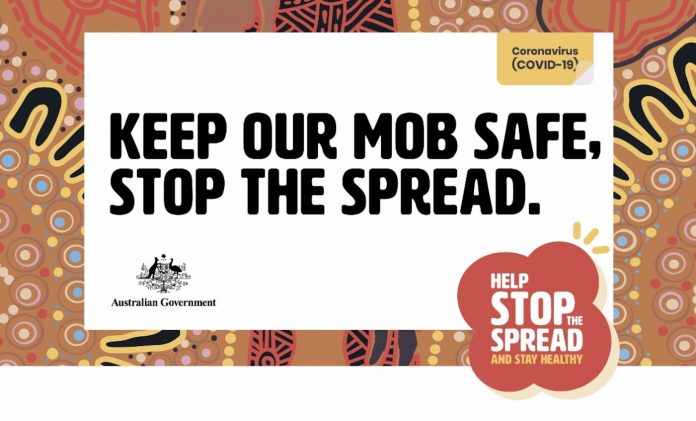Historically, Aboriginal people and communities have often been introduced to new transmittable viruses.
In April 1789 – 15 months after the First Fleet came to Sydney to establish a penal colony in NSW – a smallpox outbreak decimated the local Aboriginal community. At the time, smallpox was one of the most contagious and deadly diseases to have been inflicted upon humankind, resulting in the deaths of 300 hundred million people worldwide in the 20th century alone.
The Aboriginal communities living around Sydney Cove and the headland had never been exposed to such an infectious virus; they had no resistance to the disease. It is estimated that up to 70 per cent of the Aboriginal community in the area died from smallpox during this period.
Another virus that had a massive impact on the lives of Aboriginal communities was the 1918 “Spanish” influenza pandemic. In Sydney, 40 per cent of the population caught it, with records showing that the virus completely devastated Aboriginal communities.
Meanwhile, in the Gympie region of Queensland, in a locality called Barambah – now known as Cherbourg – the “Spanish” flu killed 90 people. Within three weeks of the virus reaching the local Aboriginal community, only a handful of people were left uninfected out of a population of 600.
Mass graves were dug to accommodate the dead. A Brisbane newspaper expressed indifference by reporting that the Indigenous population had “died like flies”. How the virus got into the town is still not known, as there was just one road leading into the community.
Similarly, the Covid-19 virus was initially spread by just one or two people; since then over a million have been infected worldwide.
Pat Turner, CEO of NACCHO (National Aboriginal Community Controlled Health Organisation), said that should the virus reach remote Aboriginal populations it would be “absolutely catastrophic”.
Although Aboriginal Medical Services have much better access to resources than before, we must also take into consideration the high level of chronic conditions that our people already carry, such as respiratory problems, heart disease and diabetes.
Combined with the coronavirus, these pre-existing medical conditions can prove fatal. For this reason, Aboriginal communities along with the elderly are the most vulnerable to the virus.
It must also be taken into consideration that many Aboriginal people live in poor housing conditions which are typically overcrowded. This only exacerbates the vulnerability of the Aboriginal community to the Covid-19. Indeed, the disease has the potential to have a similar impact on Aboriginal communities as the “Spanish” flu did in Barambah 100 years ago.
In response, the Redfern Aboriginal Medical Service (AMS) is currently testing for Covid-19 and a triage has been set up with social-distance seating in place. A nurse is on duty to take people’s temperatures and perform other essential duties prior to the patient being referred to a doctor within the clinic.
The AMS CEO has sent Aboriginal patients a strong letter of support and the organisation has developed a Coronavirus Fact Sheet with the culturally appropriate title: “Keeping our mob safe.”
With the elderly most of contracting the virus, it is imperative that Aboriginal families prioritise the care of Elders to ensure that they are kept safe and in good health. After all, it was our Elders who were the trailblazers and activists responsible for the establishment of many of the Aboriginal organisations and community services that exist today. Moreover, they are the keepers of our cultural knowledge and traditions.
We all need to work together and do our bit to stop the spread of coronavirus. It is only by working together, can we keep our mob safe.
_______________
For a copy of the Coronavirus Fact Sheet call Mona at the AMS on 9319 5823.





